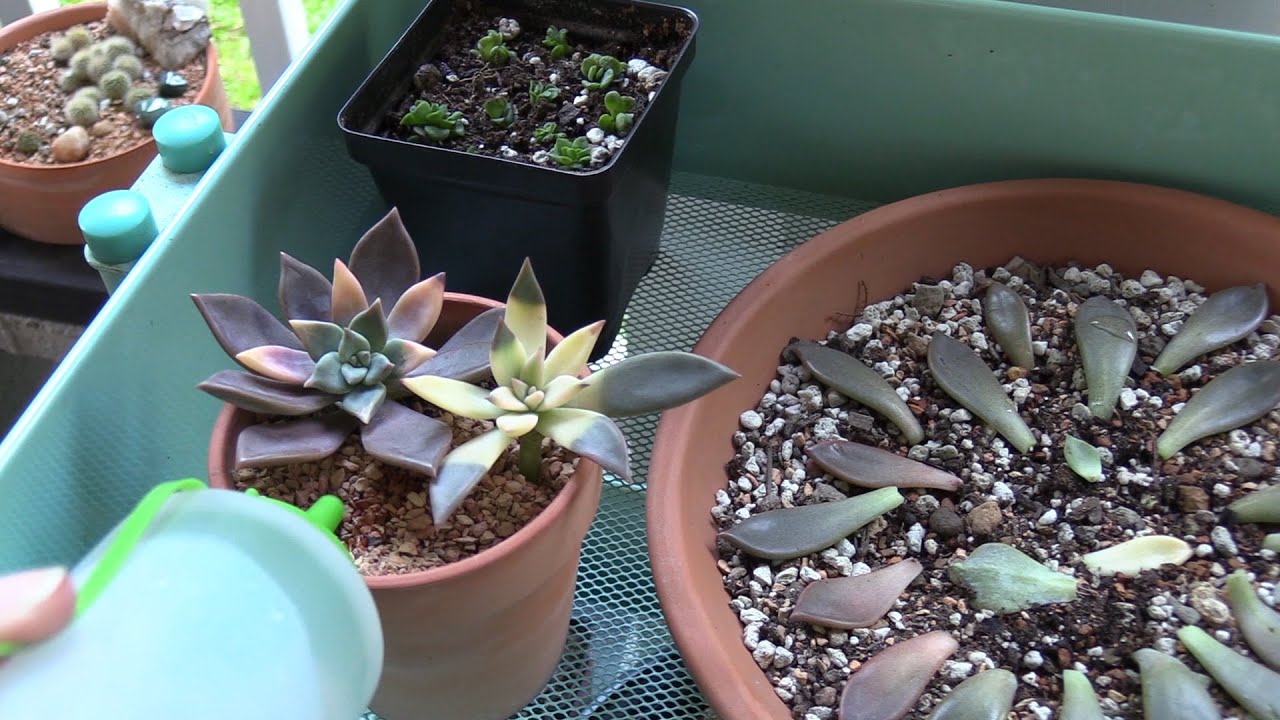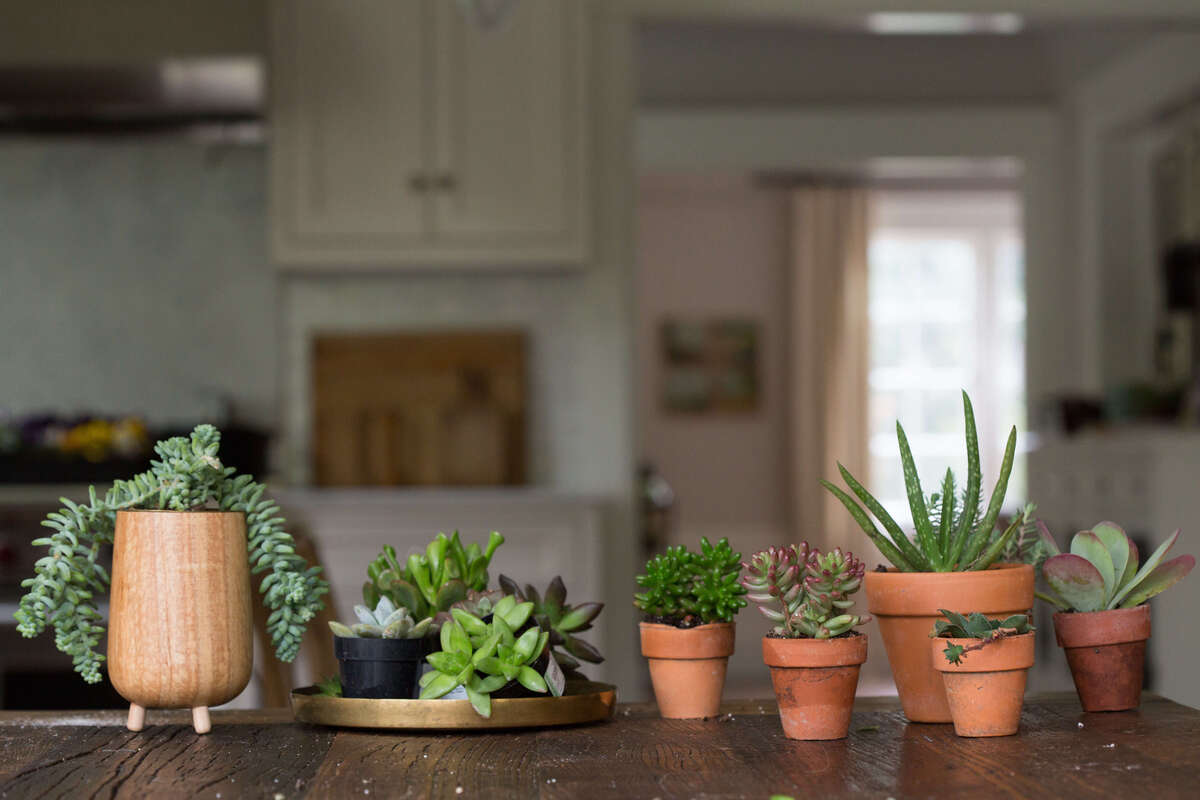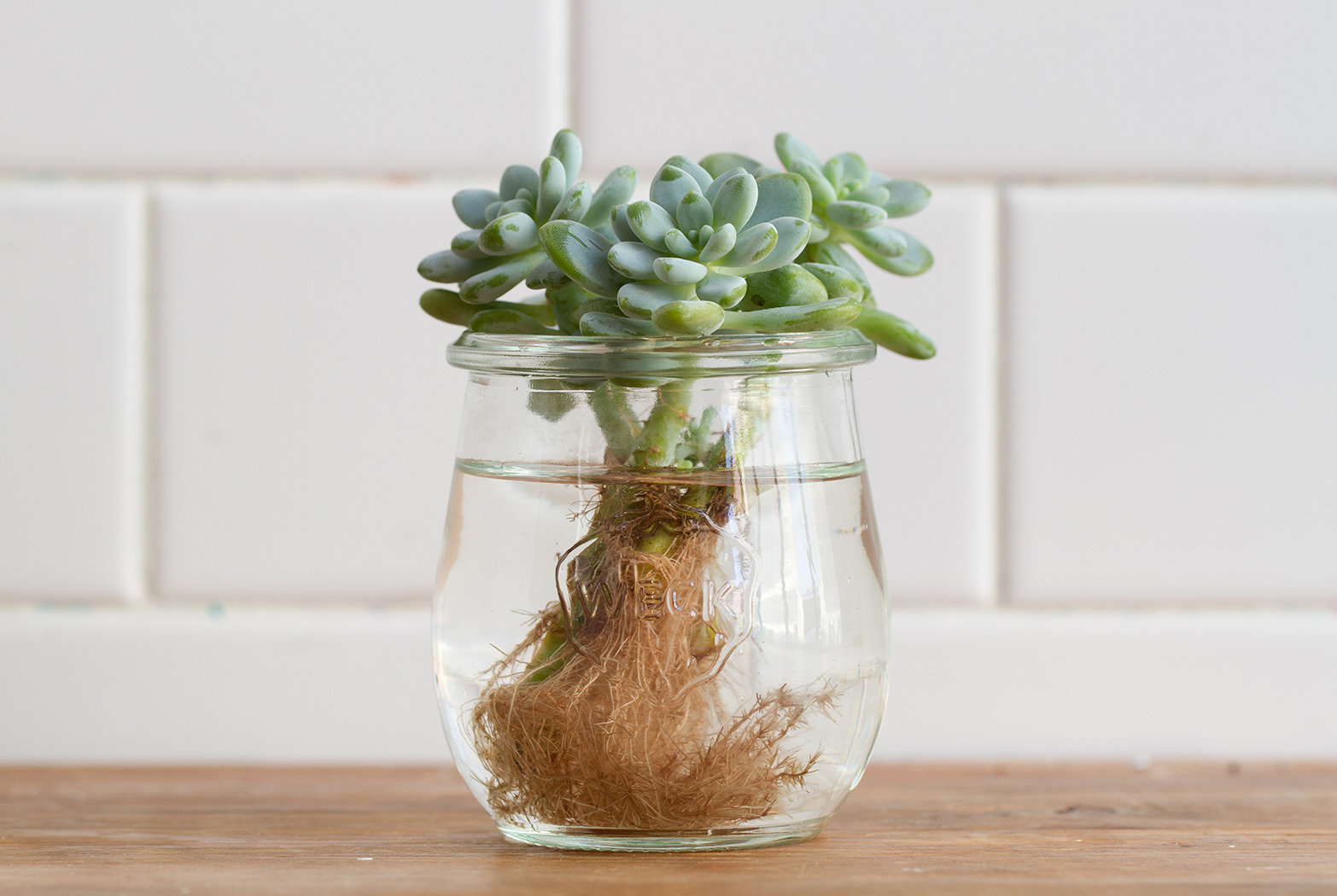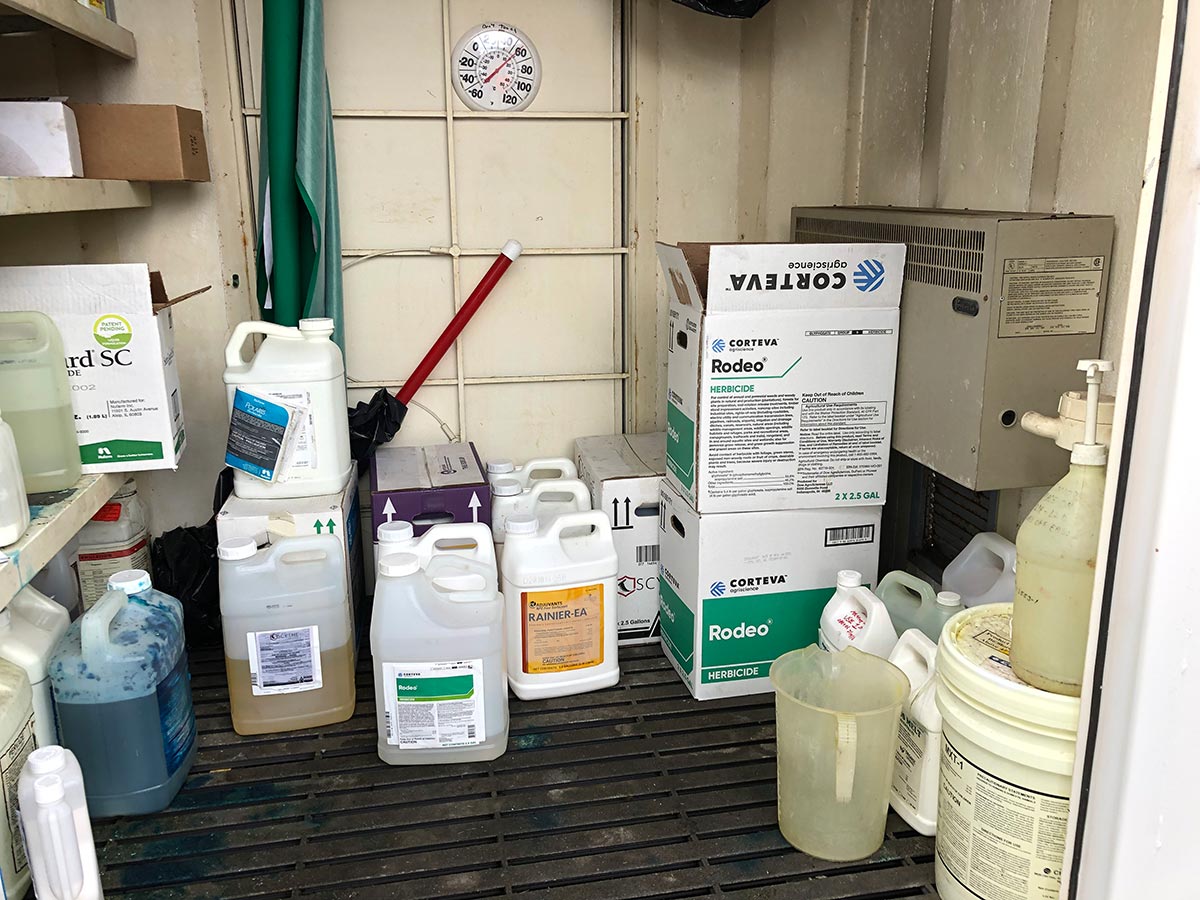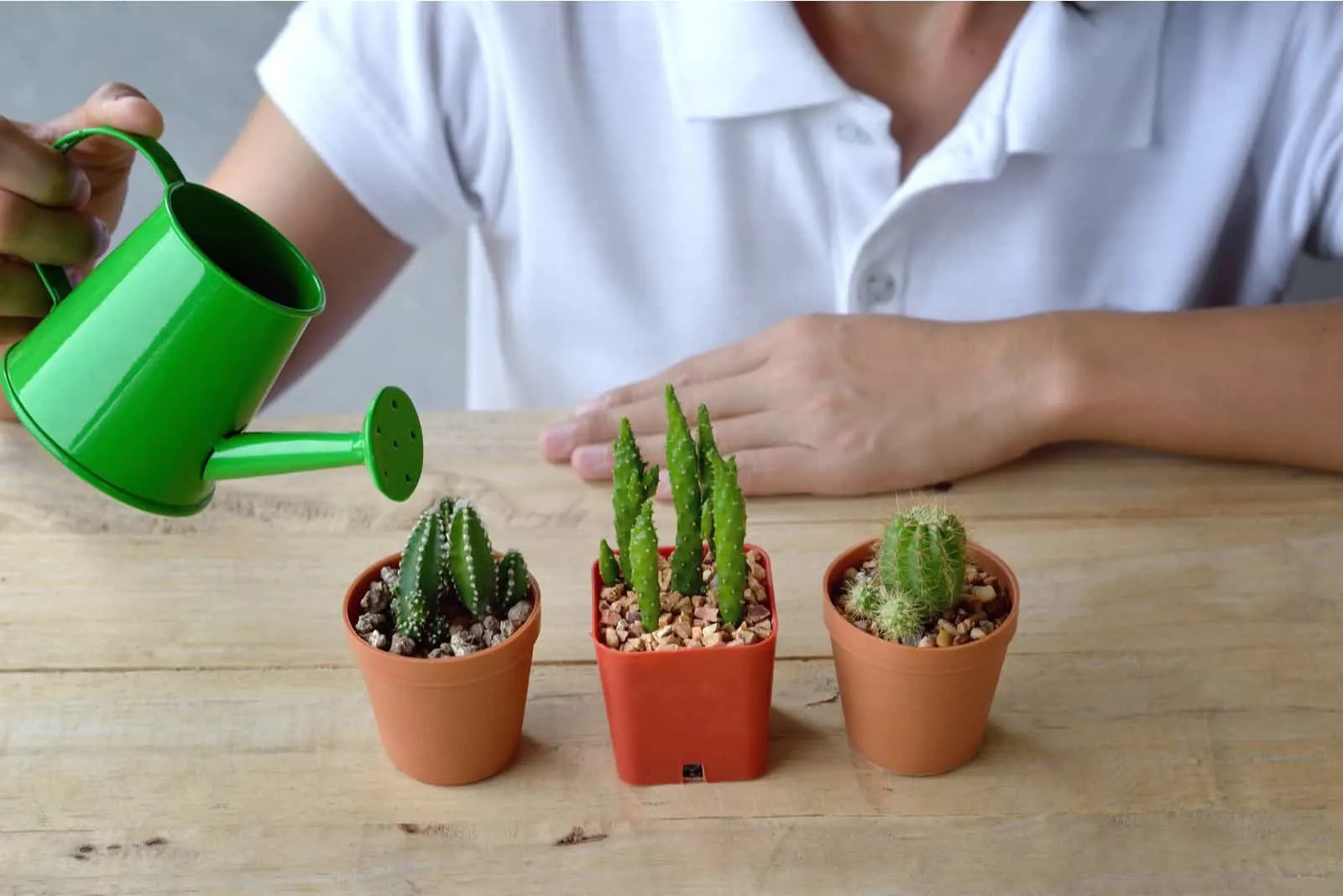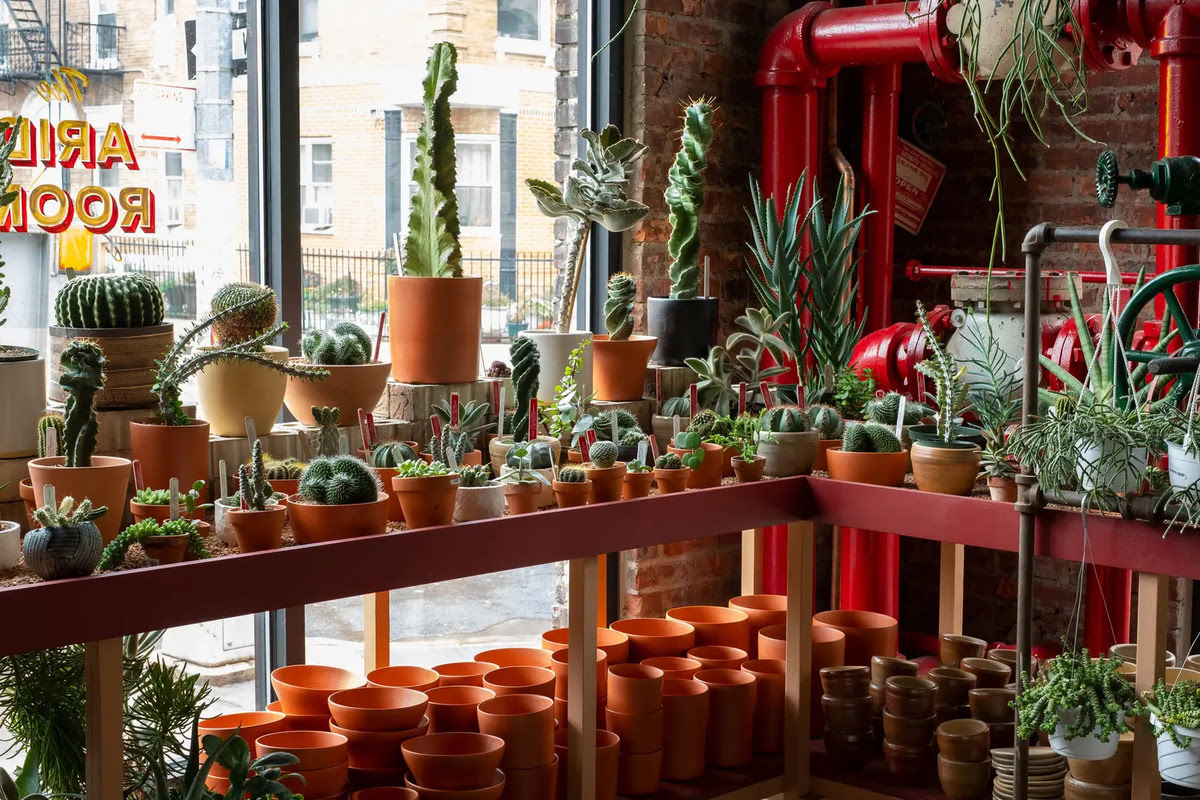Home>Types of Gardening>Ornamental Gardening>Where Do Succulents Store Water
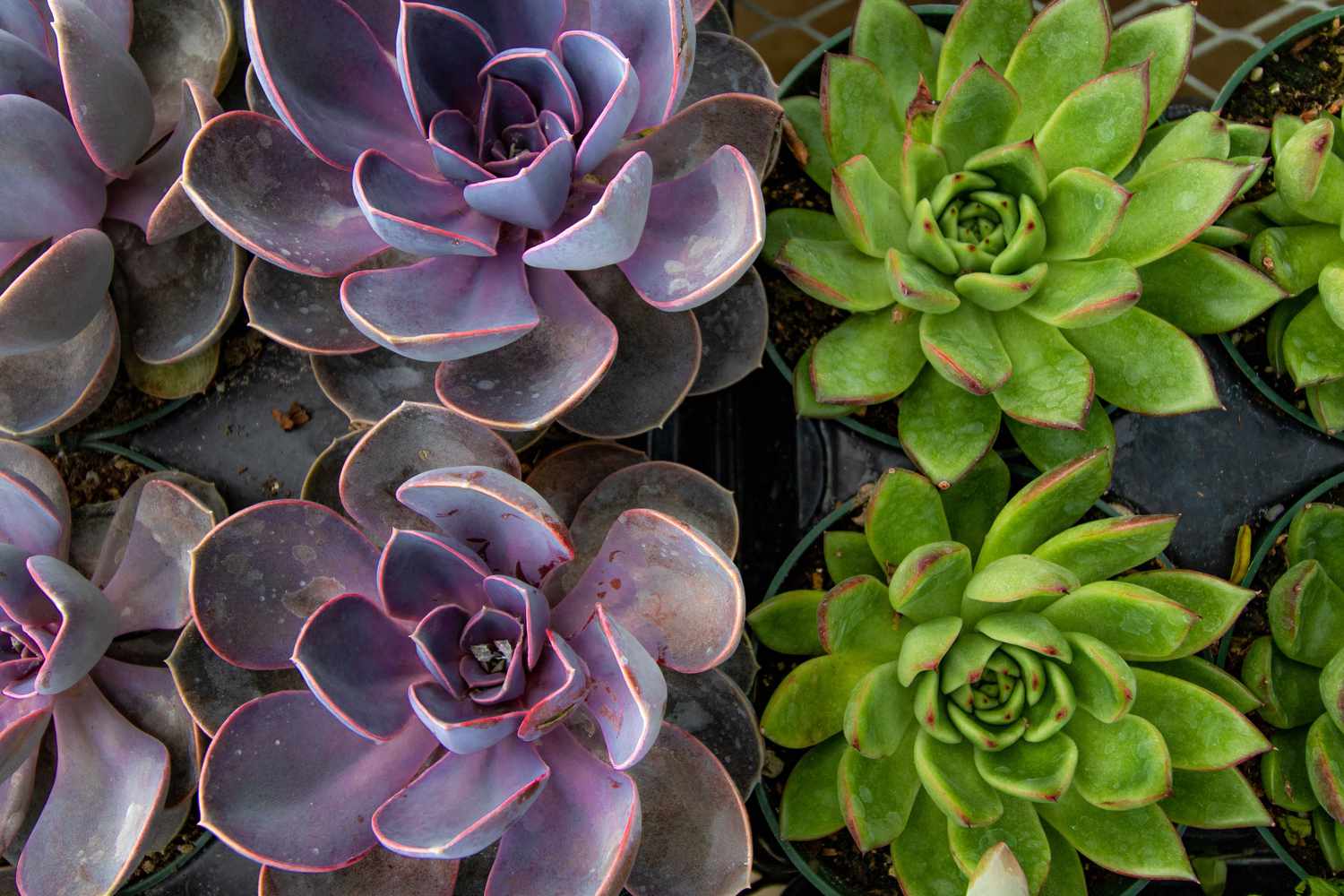

Ornamental Gardening
Where Do Succulents Store Water
Published: December 30, 2023
Learn where succulents store water and how it helps with ornamental gardening. Discover the secrets to growing healthy and vibrant succulents in your garden.
(Many of the links in this article redirect to a specific reviewed product. Your purchase of these products through affiliate links helps to generate commission for Chicagolandgardening.com, at no extra cost. Learn more)
Table of Contents
Introduction
Welcome to the fascinating world of succulents! These unique plants have captured the hearts of gardeners and plant enthusiasts with their stunning array of shapes, colors, and textures. Succulents are known for their ability to store water in various parts of their anatomy, allowing them to thrive in arid environments.
Understanding where succulents store water is key to their survival and success in both natural habitats and cultivated gardens. In this article, we will delve into the anatomy of succulents and explore the different structures and mechanisms that enable them to store water. Whether you’re a seasoned gardener or just embarking on your plant journey, this article will provide valuable insights into the world of succulent water storage.
Before we dive into the specifics, it’s important to note that succulents are a diverse group of plants that encompass various species and families. They can be found in different parts of the world, from arid deserts to rocky slopes and even forests. Despite their environmental differences, succulents share a common trait: the ability to survive in water-scarce conditions.
So, join us as we unravel the mysteries of succulent water storage. From leaf modifications to stem and root adaptations, we’ll explore the fascinating ways in which succulents have evolved to thrive in challenging environments.
Anatomy of Succulents
Before we delve into the intricate world of water storage in succulents, it is essential to understand their unique anatomy. Succulents possess distinct adaptations that set them apart from other plants and allow them to thrive in harsh and arid environments.
At first glance, you may notice that succulents have fleshy leaves, thick stems, and, in some cases, specialized roots. These characteristics are not just for aesthetic appeal but serve a crucial purpose in their survival. The anatomy of succulents is primarily structured to minimize water loss and maximize water storage.
Let’s begin with the leaves. Succulent leaves are typically thick and fleshy, with a waxy coating called a cuticle that helps reduce water evaporation. The inner layers of the leaf, known as the mesophyll, contain specialized cells capable of storing water. These cells are often arranged in layers, creating the characteristic plump appearance of succulent leaves.
Next, we move on to the stems. Unlike conventional plants, succulent stems can act as reservoirs for water storage. They are often swollen or cylindrical, serving as a storage tank for excess water. In some succulent species, the stems can even branch or develop unusual shapes, adding to their unique appeal.
Finally, let’s explore the roots of succulents. While not all succulents have specialized roots, certain species have developed adaptations that aid in water absorption and storage. For example, some succulents have extensive fibrous root systems that spread wide and shallow, allowing them to capture moisture from a larger area. In contrast, others have deep taproots that enable them to reach groundwater sources during periods of drought.
The anatomy of succulents is a testament to their remarkable ability to survive in harsh conditions. Their fleshy leaves, thick stems, and specialized roots all contribute to their water storage capabilities, ensuring their resilience and longevity in arid environments.
Now that we have grasped the basic anatomy of succulents, let us explore the different structures and mechanisms they employ to store water effectively.
Storage Structures of Succulents
Succulents have evolved a variety of specialized storage structures that allow them to store and conserve water for extended periods. These structures play a crucial role in their ability to survive in dry and arid conditions. Let’s explore some of the common storage structures found in succulents: leaf modifications, stem adaptations, and root modifications.
Leaf Modifications
One of the most iconic features of succulents is their thick and fleshy leaves. These leaves undergo various modifications to enhance their water storage capabilities. One common modification is the presence of water-storing parenchyma cells in the mesophyll layer. These cells can expand and contract, accumulating and releasing water as needed. Additionally, succulent leaves often have a reduced surface area and are covered in a waxy cuticle to minimize water loss through transpiration.
Some succulents also feature specialized leaf structures such as rosettes or overlapping scales. Rosette leaves form a tight, circular arrangement, creating a cup-like shape that can catch and retain water. It allows the plant to harness rainfall efficiently, directing the water towards the base where it can be stored. In contrast, succulents with overlapping scales have a series of small, overlapping leaves that trap moisture and prevent evaporation.
Stem Modifications
Succulent stems are another significant storage structure in these plants. The stems of succulents are often thick and fleshy, capable of storing large amounts of water. Some succulents have cylindrical or columnar shapes, while others develop swollen, bulbous structures. These stem adaptations not only provide water storage but also serve as a means of photosynthesis, as the green tissue in the stems can carry out this essential process.
In certain succulent species, the stems also have the ability to produce offsets or pups. These are small, miniature versions of the parent plant that can grow independently. Offsets are an additional strategy for water storage, as they can detach and establish themselves in new areas, allowing the parent plant to conserve resources during drought periods.
Root Modifications
The root system of succulents can exhibit various modifications for water storage and absorption. Some succulents have shallow, wide-spreading roots that cover a larger surface area. This allows them to capture moisture from a larger area, especially during rainfall events. Other succulents possess deep taproots that can reach down to groundwater sources, providing a constant water supply even in dry conditions.
Furthermore, succulent roots often have specialized structures called velamen, which are layers of dead cells that absorb moisture from the surrounding environment. The velamen acts like a sponge, absorbing and retaining water for times of water scarcity. This adaptation enables succulents to make the most of limited water resources in their habitats.
Through these leaf modifications, stem adaptations, and root modifications, succulents have developed a range of storage structures that allow them to survive in harsh and arid environments. These structures not only store water but also provide additional protection against desiccation.
Leaf Modifications
Leaf modifications are a key feature of succulents, contributing to their ability to store and conserve water. These adaptations help succulents thrive in arid environments by reducing water loss through transpiration and maximizing water absorption. Let’s explore some common leaf modifications found in succulent plants.
One of the most notable leaf modifications is the presence of thick and fleshy leaves. These leaves are filled with water-storing parenchyma cells, which allow the plant to accumulate and retain water for extended periods. The fleshy nature of succulent leaves gives them a plump appearance, a result of the water stored within their tissues.
In addition to their water storage capacity, succulent leaves often have reduced surface areas to minimize water loss. Many succulent leaves are smaller and thicker compared to leaves of non-succulent plants. This reduced surface area helps prevent excessive evaporation and conserves water in dry conditions.
Succulent leaves are also covered in a waxy cuticle, which acts as a protective barrier against water loss. The cuticle forms a thin, waterproof layer on the leaf surface, reducing the rate of transpiration. It helps to seal in moisture and prevent excess water loss, allowing the plant to survive in arid environments.
Some succulents have additional leaf modifications, including spines and thorns. These structures serve multiple purposes for the plant. Spines, commonly seen in cacti, provide shade and shield the plant from intense sunlight, reducing water loss through excessive evaporation. They also act as a deterrent against herbivores, protecting the plant from potential damage.
Another remarkable leaf modification is the formation of rosettes. Rosettes are tight circular arrangements of leaves that create a cup-like shape at the base of the plant. This unique structure helps direct rainfall and dew towards the center of the rosette where water can be stored. The leaves in the rosette act as a funnel, channeling water towards the plant’s central storage area.
Furthermore, succulent plants may feature overlapping scales on their leaves. These scales trap moisture and create a microclimate around the leaf surfaces, reducing evaporation and conserving water. The overlapping scales act as a protective shield, preventing water loss and contributing to the plant’s water storage capacity.
Leaf modifications in succulents are remarkable adaptations that enable these plants to survive in harsh and dry environments. The combination of water-storing parenchyma cells, reduced surface areas, waxy cuticles, spines, rosettes, and overlapping scales work together to maximize water storage and minimize water loss through transpiration. These leaf modifications make succulents not only eye-catching but also highly efficient in conserving water resources.
Stem Modifications
The stems of succulent plants undergo various modifications that enable them to store and conserve water. These adaptations play a crucial role in the plant’s ability to thrive in arid environments. Let’s explore some of the common stem modifications found in succulents.
One of the most prominent stem modifications observed in succulents is their tendency to be thick and fleshy. The stems of succulent plants are often swollen or cylindrical, allowing them to serve as reservoirs for water storage. The thickened stems act as a water storage tank, enabling succulents to withstand prolonged periods of drought.
In addition to their water storage capacity, the stems of succulent plants also contribute to photosynthesis. While leaves are typically the primary site for photosynthesis in most plants, succulent stems have adapted to perform this crucial process as well. The green tissue present in the stems carries out photosynthesis, allowing the plants to generate energy even when leaf surfaces are minimized to reduce water loss.
Another fascinating stem modification observed in succulents is the production of offsets or pups. These are small, miniature versions of the parent plant that grow alongside the main stem. Offsets are an adaptive strategy for water storage and propagation. As the parent succulent accumulates water, it also produces these offsets, which can detach and establish themselves as independent plants. During times of drought, the parent plant can conserve resources while the offsets continue to grow and adapt.
Succulent stems also exhibit branching patterns and unusual shapes, enhancing their ability to adapt to water-scarce environments. Some succulents have intricate, tree-like branching structures that provide additional surface area for water absorption. Others develop unique stem shapes, such as columnar or globular forms, which serve as adaptations to maximize water storage in their specific habitats.
Besides water storage and photosynthesis, the thickened stems of succulent plants also offer protection against predators and harsh environmental conditions. The fleshy nature and water-filled tissues create a physical barrier that deters herbivores from consuming the plants. Additionally, the higher water content in the stems helps to maintain a stable internal temperature, protecting the plant from extreme heat and cold.
Overall, the stem modifications in succulent plants are remarkable adaptations that allow them to store water, conduct photosynthesis, propagate, and provide protection. The thick and fleshy stems, along with branching patterns and unique shapes, enable succulents to thrive in arid environments, making them well-suited for water conservation and survival in challenging conditions.
Root Modifications
Root modifications are essential adaptations in succulent plants that contribute to their ability to store and acquire water efficiently. These modifications enable succulents to survive in arid environments where water availability is limited. Let’s explore some common root modifications found in succulent plants.
One of the notable root modifications in succulents is the development of specialized root structures. Some succulents have shallow, wide-spreading roots that cover a larger surface area. This allows them to capture and absorb moisture from a larger volume of soil. The wide-reaching root system helps the plant access water more effectively, especially during rainfall events.
On the other hand, some succulents possess deep taproots that extend deep into the soil. These taproots are capable of reaching groundwater sources, providing a continuous water supply to the plant even in dry periods. The ability to tap into underground water sources is a critical adaptation for succulents in regions with limited rainfall.
Furthermore, succulent roots have a unique structure called velamen. Velamen is a layer of dead cells that surround the root, acting as a protective barrier and aiding in water absorption. These cells have an incredible ability to absorb and retain moisture from the surrounding environment. The velamen acts like a sponge, allowing the roots to capture and store water effectively.
Succulent plants also develop a form of specialized roots called adventitious roots. Adventitious roots can emerge from various parts of the plant, such as stems or leaves, rather than from the usual root system. These additional roots provide supplementary water absorption capacity, particularly during drought conditions. They allow the plant to increase its surface area for water uptake, enhancing its ability to survive in dry environments.
In addition to water storage and absorption, roots of succulent plants often exhibit mycorrhizal relationships. Mycorrhiza is a mutually beneficial symbiotic relationship between the roots of plants and fungus. The fungal hyphae help the plant absorb water and nutrients from the soil, while the plant provides sugars and nutrients to the fungus. This partnership enhances the plant’s water acquisition capabilities, particularly in nutrient-poor soils.
Overall, root modifications in succulent plants are vital for their survival in arid environments. The development of shallow, wide-spreading roots, deep taproots, velamen, adventitious roots, and mycorrhizal relationships all contribute to their ability to store and acquire water efficiently. These adaptations enable succulents to thrive in water-scarce conditions and ensure their long-term survival.
Water Storage Mechanisms
Succulent plants have evolved various mechanisms to store and retain water, allowing them to survive in arid environments. These mechanisms ensure the efficient use and conservation of water resources. Let’s delve into some of the primary water storage mechanisms employed by succulents.
Leaf Storage
One of the main water storage mechanisms in succulents is the storage of water in their leaves. As mentioned earlier, succulent leaves are often thick and fleshy, containing specialized cells that can store water. These cells, known as water-storing parenchyma cells, can expand and contract as needed to accommodate varying water levels.
The leaves act as reservoirs, allowing the plant to store a significant amount of water. During times of water scarcity, these water-storing cells release water to the rest of the plant, ensuring its survival. The fleshy nature of succulent leaves, combined with their reduced surface area and waxy cuticles, helps minimize water loss through transpiration and evaporation, thus maximizing the efficiency of water storage.
Stem Storage
The stems of succulent plants also play a crucial role in water storage. The thick and fleshy stems can store substantial amounts of water, serving as reservoirs during times of drought. They act as strategic storage tanks, providing a backup water supply when the soil dries out or rainfall is scarce.
Additionally, the stems of certain succulents have the ability to produce offsets or pups. These miniature versions of the parent plant grow alongside the main stem and can store water independently. This propagation strategy not only aids in plant survival but also ensures the continuation of the species.
Root Storage
Root modifications in succulents also contribute to water storage mechanisms. Some succulents have specialized roots with the capacity to store water. The fibrous or tuberous root structures can accumulate water during times of abundance and release it during periods of drought when water is scarce.
Roots with velamen, a specialized layer of dead cells, further enhance water storage capabilities. The velamen acts as a sponge, absorbing and retaining water, allowing the roots to access water reserves from the surrounding soil more efficiently.
By employing these water storage mechanisms in their leaves, stems, and roots, succulent plants have evolved to make the most of limited water resources. These adaptations ensure their survival in harsh and arid environments by storing and conserving water for extended periods.
Leaf Storage
Leaf storage is a critical water storage mechanism employed by succulent plants. The leaves of succulents are adapted to store water, allowing the plants to survive in arid environments by conserving and utilizing water efficiently. Let’s explore the fascinating process of leaf storage in succulents.
Succulent leaves are typically thick and fleshy, giving them a plump appearance. These leaves contain specialized cells called water-storing parenchyma cells. These cells have the remarkable ability to expand and contract, allowing them to store and release water as needed by the plant.
Water-storing parenchyma cells are found in the inner layers of succulent leaves, known as the mesophyll. These cells hold significant amounts of water, acting as reservoirs within the leaves. During times of water scarcity, such as periods of drought, the plant can rely on the water stored in these cells to meet its essential needs.
The fleshy nature of succulent leaves also serves to reduce the overall surface area exposed to the environment. This adaptation helps minimize water loss through transpiration, where water evaporates from the leaf surfaces. By reducing transpiration, succulent leaves prevent excessive water loss and maximize their water storage capacity.
Another crucial feature of succulent leaves is the presence of a waxy cuticle. This cuticle forms a thin, waterproof layer on the surface of the leaves, further reducing water loss through evaporation. The waxy cuticle acts as a protective barrier, sealing in moisture and preventing the rapid drying out of the succulent leaves in arid conditions.
In addition to these structural adaptations, some succulents have specialized leaf arrangements that enhance water storage. Rosette leaves, for example, are tightly arranged in a circular pattern, creating a cup-like shape at the base of the plant. When rainfall occurs, the water is funneled towards the center of the rosette, where it can be efficiently stored and utilized by the plant.
Furthermore, succulent plants with overlapping scales on their leaves have an additional mechanism for water storage. These scales trap moisture and create a microclimate around the leaf surfaces, reducing evaporation and conserving water. The overlapping scales act as a protective shield, preventing water loss and contributing to the plant’s overall water storage capacity.
Through these leaf modifications, succulent plants have evolved to store water effectively and optimize water use. The presence of water-storing parenchyma cells, reduced surface area, waxy cuticles, and specialized leaf arrangements all work together to enable succulents to survive in water-scarce environments. Leaf storage is a fundamental mechanism that allows these plants to endure periods of drought and thrive in arid habitats.
Stem Storage
Stem storage is a key water storage mechanism utilized by succulent plants. The stems of succulents have developed adaptations to store and retain water, enabling them to survive in arid environments. Let’s explore how stem storage contributes to the water management strategies of these unique plants.
One of the notable characteristics of succulent plants is their thick and fleshy stems. These stems are capable of storing significant amounts of water, serving as reservoirs during times of drought or water scarcity. The storage capacity of succulent stems allows the plants to sustain themselves when water is limited.
The thickened stems of succulents are composed of specialized tissue that can hold and retain water. This tissue, known as succulent parenchyma, contains reservoirs of water-storing cells. These cells can expand to accommodate the influx of water during periods of rainfall and contract to release stored water during dry spells. This mechanism ensures a steady supply of water for the plant’s vital functions.
In addition to water storage, succulent stems also contribute to the process of photosynthesis. While leaves are typically the primary site for photosynthesis in most plants, succulent stems have adapted to carry out this essential process as well. The green tissue present in the stems contains chloroplasts, allowing them to produce sugars through photosynthesis. This adaptation is particularly advantageous in succulents with reduced leaf surfaces, as it ensures the plant can generate energy even when water loss is minimized.
Succulent stems also play a role in propagation and survival. Some succulents have the ability to produce offsets or pups from their stems. These offsets are miniature versions of the parent plant and can grow independently when detached. By producing offsets, the parent plant not only perpetuates its genetic legacy but also ensures the survival of the species during periods of water scarcity. While the parent plant conserves resources, the offsets can draw on the stored water reserves within the stem to establish themselves and continue the lifecycle.
Furthermore, the unusual shapes and branching patterns exhibited by succulent stems contribute to water storage. Some succulents develop intricate, tree-like branching structures, providing additional surface area for water absorption. The branching patterns increase the plant’s capacity to capture rainfall and absorb water from the environment. Other succulents develop unique stem shapes, such as columnar or globular forms, which maximize water storage capacity within their specific habitats.
The storage capabilities of succulent stems not only ensure the survival of the plants during periods of extended dryness but also provide protection from predators. The fleshy nature of the stems and the stored water within act as deterrents against herbivores, making succulents less appealing as a food source.
In summary, the stem storage mechanism in succulent plants plays a crucial role in water management and survival in arid environments. The thick and fleshy stems serve as reservoirs, storing water that can be utilized during water scarcity. They also contribute to photosynthesis, propagation, and protection. The ability to store water in their stems is a remarkable adaptation that allows succulent plants to thrive in challenging conditions.
Root Storage
Root storage is a significant water storage mechanism employed by succulent plants to adapt to arid environments. These plants have developed various root modifications that enable them to store and conserve water efficiently. Let’s explore how root storage contributes to the water management strategies of succulents.
One of the notable root modifications in succulent plants is the development of specialized structures for water storage. Some succulents have shallow, wide-spreading roots that cover a larger surface area. This root structure allows them to capture and absorb moisture from a wider volume of soil, maximizing water intake during periods of rainfall or watering.
On the other hand, certain succulents possess deep taproots that can extend deep into the soil. These taproots play a crucial role in accessing groundwater sources, providing a constant supply of water even in drought conditions. The ability of these plants to tap into groundwater allows them to survive in environments where surface water is scarce.
Another important feature of root storage in succulents is the presence of specialized layers of cells called velamen. Velamen is a sponge-like tissue that surrounds the root, helping the plant absorb and retain water. These specialized cells absorb moisture from the surrounding soil and store it within the root structure, ensuring a continuous water supply even in dry periods.
The velamen also serves as a protective barrier, preventing excessive water loss through evaporation. It creates a microclimate around the roots, reducing water loss through the process of transpiration. This adaptation helps succulent plants conserve water and maximize their water storage capacity.
Succulents may also develop adventitious roots, which are roots that emerge from unusual parts of the plant, such as stems or leaves. These additional roots provide supplementary water storage capacity and increase the plant’s surface area for water absorption. This adaptive strategy allows succulents to efficiently extract water from the soil, even in challenging conditions.
Furthermore, succulent root systems often establish symbiotic relationships with mycorrhizal fungi. These fungi form a mutually beneficial partnership with the plant’s roots, aiding in water absorption and nutrient uptake. The fungal hyphae extend the root system, increasing its reach and capacity to access water in the soil. In return, the plant provides sugars and nutrients to the fungi. This symbiotic relationship enhances the water storage capabilities of succulent roots, particularly in nutrient-poor soils.
In summary, root storage is an essential water management mechanism in succulent plants. The shallow, wide-spreading roots, deep taproots, velamen, adventitious roots, and mycorrhizal relationships all contribute to their ability to store and conserve water efficiently. These adaptations allow succulents to survive in arid environments by optimizing water uptake and retention, ensuring their long-term survival and success.
Factors Affecting Water Storage in Succulents
Several factors play a significant role in the water storage capabilities of succulent plants. Understanding these factors is crucial for cultivating and caring for succulents, as it directly impacts their overall health and survival. Let’s explore some of the key factors that affect water storage in succulents.
Climate and Environmental Conditions
The climate and environmental conditions in which succulents are grown greatly influence their water storage abilities. Succulents are naturally adapted to arid and semiarid environments, where water is scarce. In such conditions, succulents have evolved to store and conserve water efficiently. Exposing succulents to excessively humid or wet climates can lead to waterlogged soil and reduced water storage capacity, which can be detrimental to their health.
Watering Practices
The frequency and amount of water provided to succulents directly impact their water storage. Succulents are adapted to thrive in dry conditions and have evolved to store water for longer periods. Overwatering succulents can lead to root rot and hinder their ability to utilize stored water effectively. It is essential to adopt a watering routine that allows the soil to dry out between waterings, simulating their natural habitat and promoting optimal water storage.
Soil Composition
The type and composition of the soil significantly affect water storage in succulents. Succulents thrive in well-draining soil that allows excess water to escape and prevents waterlogged conditions. Sandy or gravelly soils are ideal for succulents as they provide good drainage and discourage water accumulation. Aeration becomes essential in the soil, promoting root health and preventing root rot, which can impair water storage capabilities.
Pot Size
Choosing the right pot size for succulents is important for water storage. Succulents generally prefer slightly snug pots that allow the roots to fill the available space. Oversized pots can lead to excessive water retention and inhibit efficient water storage. It is crucial to choose pots with drainage holes to prevent waterlogging and ensure the proper flow of water through the soil.
Seasonal Changes
Succulents respond to seasonal changes in light and temperature, which can affect their water storage. They tend to be more actively growing and require more water during the warmer months. As the seasons transition into cooler periods, succulents may enter a period of dormancy, reducing their water requirements. Adjusting watering practices accordingly to align with seasonal changes is essential for maintaining healthy water storage in succulents.
Growth and Development Stage
Succulent plants go through various growth stages, and water storage requirements may vary accordingly. During active growth stages, such as when producing new leaves or stems, succulents may require more frequent watering to support their growth and water storage needs. As succulents mature, their water storage capacity generally increases, allowing them to withstand longer periods of water scarcity.
By considering these factors, succulent enthusiasts can optimize the water storage capabilities of their plants. Paying attention to the climate, adopting proper watering practices, selecting appropriate soil and pot sizes, being mindful of seasonal changes, and understanding growth stages will contribute to the overall health and vitality of succulent plants.
Conclusion
Water storage is a remarkable adaptation in succulent plants that allows them to thrive in arid environments. Through various leaf, stem, and root modifications, succulents have evolved to efficiently store and conserve water, ensuring their survival during times of drought and water scarcity. The fleshy leaves, thick stems, and specialized root structures of succulents are all key components of their water storage mechanisms.
Leaf modifications, such as the presence of water-storing parenchyma cells, reduced surface area, and a waxy cuticle, enable succulents to store water effectively within their leaves. The thick and fleshy stems act as reservoirs, holding significant amounts of water for the plants to utilize during dry periods. Specialized root structures, including shallow wide-spreading roots, deep taproots, velamen, and adventitious roots, aid in water absorption and storage, ensuring a consistent supply of water for succulents.
The success of water storage in succulents is influenced by various factors. Climate and environmental conditions, watering practices, soil composition, pot size, seasonal changes, and growth stages all play a vital role in maintaining optimal water storage capabilities. By understanding these factors and providing suitable conditions, succulent enthusiasts can foster healthy and thriving plants.
Succulents are not only fascinating in their ability to store water, but also in their beauty and diversity. With their unique shapes, colors, and textures, succulents have captured the interest and imagination of plant enthusiasts around the world. From the iconic cacti to the delicate echeverias, each succulent species showcases its own unique water storage adaptations.
In conclusion, the intricate water storage mechanisms of succulent plants reflect their remarkable ability to adapt and prosper in water-scarce environments. Understanding and appreciating these mechanisms not only contributes to the successful cultivation of succulents but also deepens our appreciation for the resilience and beauty of these captivating plants.

